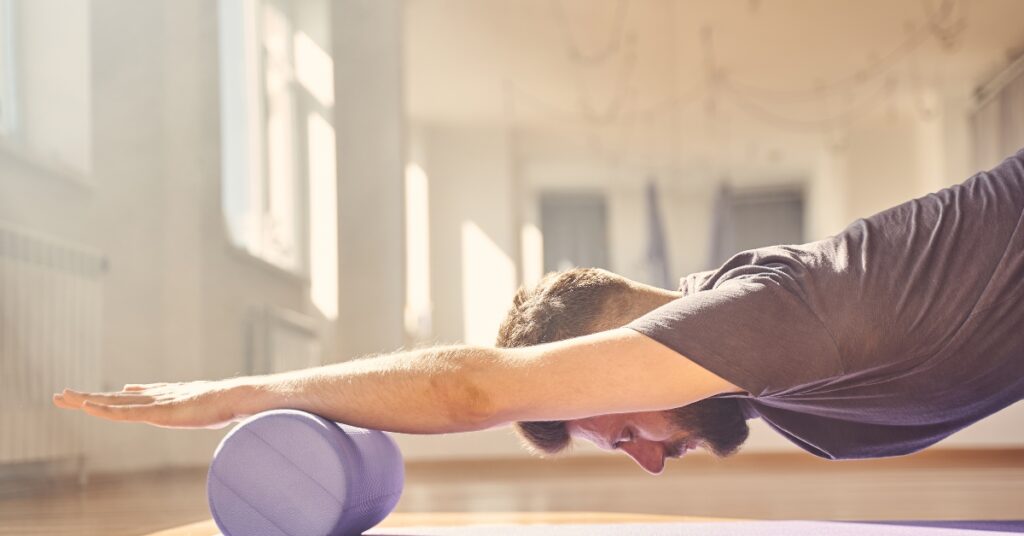The Importance of Active Recovery

Congratulations. Even though the world experienced a few tough years navigating through COVID, you’ve managed to find a way to dig in and keep up with your fitness regime. Many of you purchased home equipment, went back to the gym, hired personal trainers, or even found a new activity to help reset your bodies and mind—all good.
Pushing and challenging our bodies is essential to achieving any fitness level, and we’ve all realized how necessary fitness is to our mental well-being.
But how many of you are including active recovery into the equation? Active recovery, you say? Does that mean taking a rest day? Sorry, we are not prescribing a day on the couch bingeing your favourite Netflix program, although you’re probably due a rest day from time to time.

In a nutshell, active recovery is working muscle groups after you exercise. Montreal’s Lisa Mastracchio, aka Coach Lisa, a personal trainer and an award-winning canfitpro certified fitness professional, says, “Even if you’ve been training hard with lots of intensity, whether it’s resistance training, a form of HITT, running etc., our bodies need active recovery. This way, you can perform better the next time you work out.” With over 30 years of experience training live and online classes, Mastracchio says it helps to understand the difference between passive recovery, taking a day off resting versus active recovery, and participating in a low-intensity activity.”
“First tip, stop working out every day. Working out is a form of breaking down the body. If we’re constantly working out and training hard, our body never gets a chance to replenish, rebuild, and repair. So, active recovery is when we build our bodies back up by allowing for that rest to happen but in an active form.” You want to supplement and reward your body after your workout by helping your muscles recover.
Remember, when you’re working out at a high intensity, not only do you get tired, but you also build up blood lactic acid. Lactic acid is what helps your body function when doing any strenuous exercise. But once you’ve finished your workout, you want to flush out that lactate. That’s why you shouldn’t just end your workout cold. Whether you include an active cooldown or an exercise activity that helps with active recovery – your body needs to return to a state of homeostasis or balance.
What if you’re feeling sore after your workout or even a few days later?
You’re probably feeling the effect of Delayed Onset Muscle Soreness (DOMS). That soreness is a result of tiny tears in your muscles. It’s perfectly natural, but all the more reason to include active recovery or movement to help in the repair process. When you exercise, you’re increasing blood flow to your muscles, helping to speed up recovery.
But remember to listen to your body. If you’re experiencing sharp or severe pain, please see your doctor.
So, what does an active recovery activity look like?
“It could be walking, cycling outside or on a stationary bike, yoga, or a fitness class. The key is dialling down the intensity. Movement is important, but you’re not going out hard. The exercise you choose is to offset the intensity you’ve just completed. So, if you just finished running a marathon – you wouldn’t go out and run another ten miles as an active recovery. Instead, you might go on a light bike ride.”
A recent study in the International Journal of Sports Medicine Studies found that triathletes who hit the pool after a HITT session had a better exercise program the following day. But you don’t need to be a triathlete to reap the benefits.
Walking is another easy recovery activity to include after your workout, rest day, or day off. Doing yoga helps to stretch out those sore muscles while helping increase your flexibility. Even giving yourself a self-massage on a foam roller helps to reduce tightness, sore muscles, and inflammation while helping improve your range of motion.
When should you include active recovery?
“There is no real hard fast rule. Ideally, try to get in the habit of including it after your workout. When I’m training my clients, many don’t have the time to include another 15 – 20 minutes. I like to have it scheduled within my training week, where I have a couple of days where I’ll include a recovery session.”
Will active recovery impact my workout schedule?
“People think the change happens in their body when they’re working out. But it’s not. It’s the opposite,” says Mastracchio. “When you recover, that’s when things are rebuilding. So, don’t shortchange those results. You can’t constantly be in breakdown mode. I always tell my clients if they train hard, even three or four days in a row, there’s no way they’re giving their 100% capacity on that fifth day. Instead, you want to push hard when it’s time. What’s more important is that you’re able to rest equally hard so that your body performs at its best all the time, mentally and physically.”
